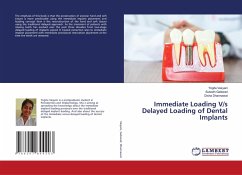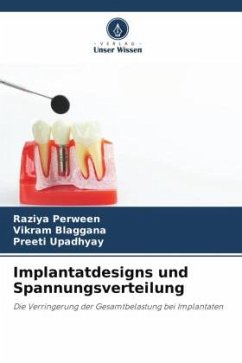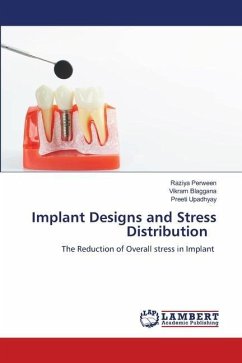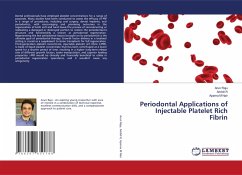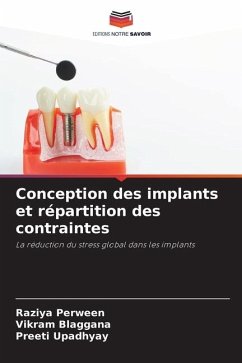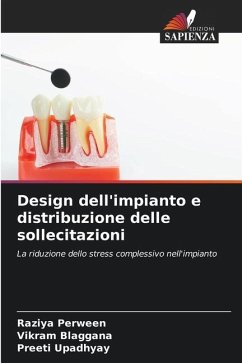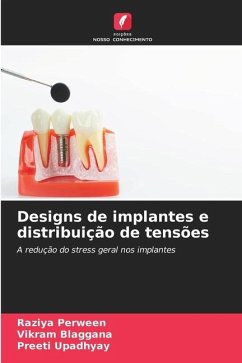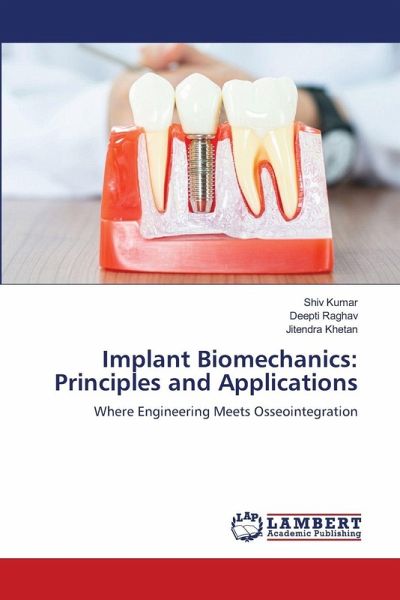
Implant Biomechanics: Principles and Applications
Where Engineering Meets Osseointegration
Versandkostenfrei!
Versandfertig in 6-10 Tagen
45,99 €
inkl. MwSt.

PAYBACK Punkte
23 °P sammeln!
Biomechanics plays a crucial role in implant dentistry by applying engineering principles like statics, dynamics, and stress analysis to manage chewing forces. Implants must handle vertical and lateral loads while minimizing stress on surrounding bone. Improper angulation or overload can lead to bone loss or implant failure, while too little stress may cause bone atrophy. Optimal outcomes depend on firm bone-implant contact and minimal micromotion.Patient-specific factors such as bone density, occlusion, and force magnitude guide implant design. More implants, wider diameters, and strategic pl...
Biomechanics plays a crucial role in implant dentistry by applying engineering principles like statics, dynamics, and stress analysis to manage chewing forces. Implants must handle vertical and lateral loads while minimizing stress on surrounding bone. Improper angulation or overload can lead to bone loss or implant failure, while too little stress may cause bone atrophy. Optimal outcomes depend on firm bone-implant contact and minimal micromotion.Patient-specific factors such as bone density, occlusion, and force magnitude guide implant design. More implants, wider diameters, and strategic placement help distribute stress effectively. Reducing cantilever length, increasing surface area, and precise angulation are key to avoiding biomechanical overload.Finite Element Analysis (FEA) helps simulate stress distribution, but limitations remain. With ongoing advancements in implant design, the goal is clear: to achieve long-term success by aligning mechanical stability with biologicalintegrity.




